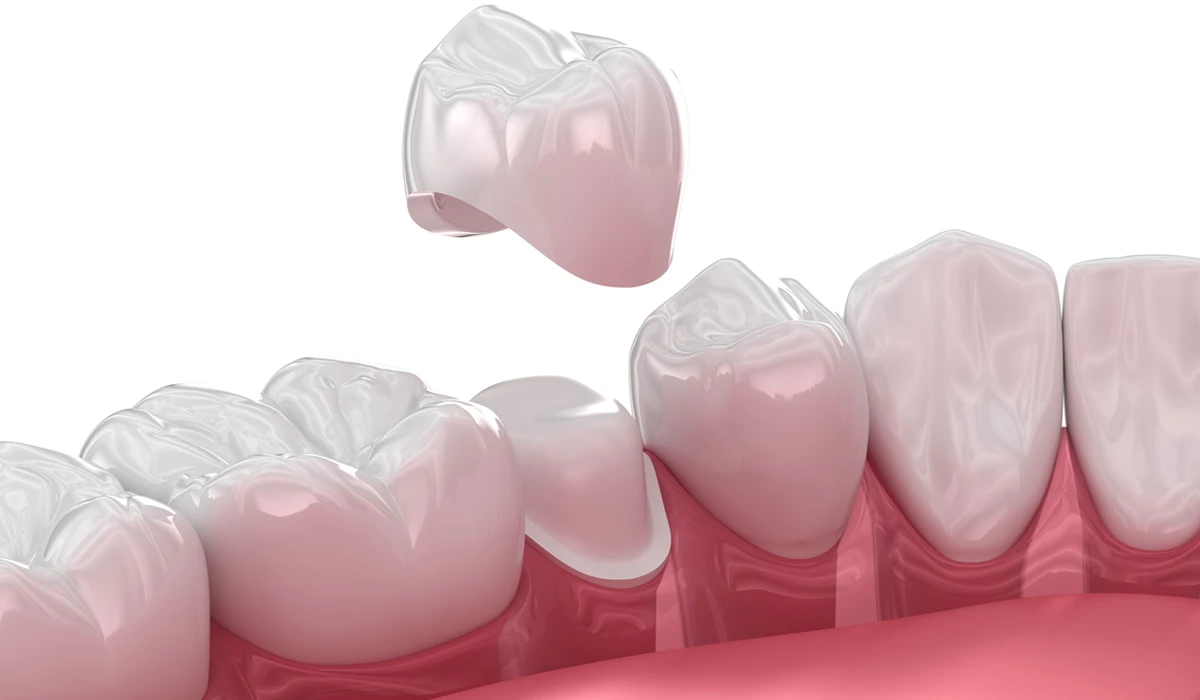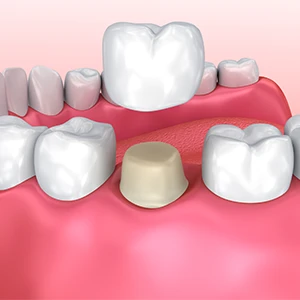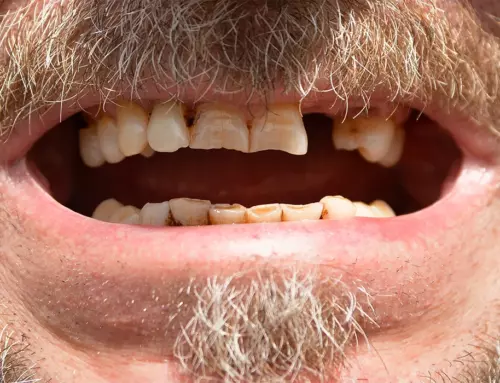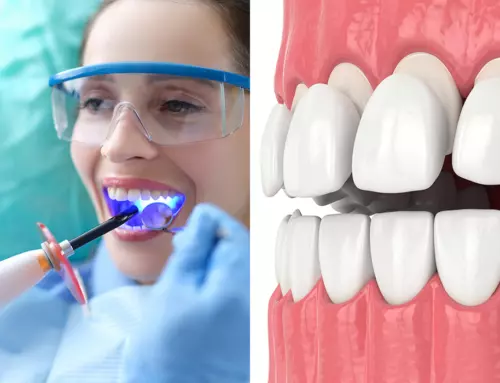If your tooth has been damaged, it’s important to act promptly by consulting your dentist to prevent further problems. In several cases, a dental crown is recommended to restore and protect the compromised tooth, providing several advantages for its preservation and improved function. In this article, we’ll take you through each step of the dental crown procedure, from the first consultation to the final placement of the crown. Keep on reading to explore the step-by-step process of getting a dental crown.
What are Dental Crowns?
Dental crowns, also called caps, are custom-made prosthetic restorations designed to cover damaged, decayed, or aesthetically flawed teeth. They are shaped and colored to match natural teeth and are placed over the tooth above the gum line. Crowns provide strength, protection, and improved appearance to the treated tooth, restoring its functionality and overall dental health.
Common materials used for crowns include porcelain, metal alloys, and ceramic blends, chosen based on factors such as durability, aesthetics, and the location of the tooth in the mouth.
Types of Dental Crowns?
There are several types of dental crowns, each with its unique advantages and suitable applications:
Porcelain Crowns:
These crowns are crafted from porcelain, offering a natural tooth color match. They are an excellent choice for front teeth due to their lifelike appearance.
Metal Crowns:
These crowns are durable and resistant to wear as they are made from metals like gold alloy or base metal alloys. They are often used for molars or teeth that undergo significant biting forces.
Porcelain-Fused-to-Metal (PFM) Crowns:
PFM crowns have the strength of metal along with the lifelike appearance of porcelain. They consist of a metal base coated with porcelain, making them a versatile option for use on both front and back teeth.
All-Ceramic or All-Porcelain Crowns:
These crowns are completely made of porcelain or ceramic materials, providing excellent aesthetics and biocompatibility. They are best for patients with metal allergies.
Composite Resin Crowns:
These crowns are made from composite resin material and are typically used for temporary crowns or in situations where cost is a significant concern.
Zirconia Crowns:
Zirconia crowns are known for their exceptional strength and durability. They are tooth-colored and are suitable for both front and back teeth.
Temporary Crowns: These crowns are made from acrylic or stainless steel and are used as temporary covers while permanent crowns are being fabricated.
Steps to the Dental Crown Procedure 
The steps to the Dental Crown Procedure are as follows:
Examine the damaged tooth:
Before your dentist proceeds with restoring a damaged tooth using a dental crown, they will thoroughly examine the tooth in question. This examination helps them determine whether a crown is the best option to repair and protect the tooth. Additionally, they will check for any other dental issues that may need to be addressed before placing the crown. For example, if there is decay present, they will treat it before proceeding with the dental crown procedure.
Prepare the affected tooth
When you and your dentist opt for restorative dental treatment involving a dental crown, the first step is preparing the affected tooth. Your dentist will begin by carefully shaping the surface of the tooth to make room for the ceramic cap. This process involves removing a small amount of enamel.
To ensure your comfort, your dentist will administer a local anesthetic, ensuring you don’t feel any discomfort. After preparing the tooth, you’ll receive a temporary crown to protect it while the permanent one is being made.
Take a dental impression
Before fitting the temporary crown, your dentist will take an impression of your smile. This can be achieved using either a physical mold or digital imaging. The impression captures the size and shape of your tooth, which is then sent to the dental lab to create a customized permanent crown.
Constructing a temporary dental Crown
While you wait for your permanent crown, your dentist will provide you with a temporary one. Meanwhile, in the dental lab, your personalized crown is being meticulously crafted, typically taking two to three weeks. This ensures a comfortable fit that won’t affect your bite. Additionally, the crown is designed to blend seamlessly with your natural smile, ensuring both beauty and functionality.
Securing the Ceramic cap over the tooth
After your personalized crown is ready, you’ll revisit your dentist’s office for its placement. The temporary crown will be removed, and the ceramic cap will be securely affixed using dental cement. A thorough polishing ensures that your new dental fixture looks and feels impeccable in your smile.
With diligent care, the crown can remain in position for up to fifteen years following this appointment. Adhere to your dentist’s aftercare instructions to maximize the benefits of your crown.
Conclusion
The dental crown procedure is a straightforward and effective way to restore damaged or decayed teeth. Understanding each step involved in the process makes patients feel more confident about undergoing dental crown treatment. If you have any questions or concerns about the dental crown procedure, consult your dentist for personalized guidance and care.
Ready to restore your beautiful smile with a dental crown procedure? Book an appointment online or call us at (954) 406-6897 to schedule a consultation with our experts at Delight Dental Smiles in Hollywood, FL, today!
FAQ
How long does it take to place a crown on a tooth?
The process of bonding the crown to the tooth with dental cement typically takes about 20 minutes to complete. However, if the dentist needs to make multiple adjustments to achieve the proper fit, it may extend to 30 minutes or longer.
Is a dental crown procedure painful?
Many people worry that dental procedures will be painful, but getting a crown is typically not a painful experience. It’s a straightforward process, and any discomfort is usually minimal and easily manageable, similar to routine dental treatments.
How is a tooth prepped for a crown?
To get a tooth ready for a crown, the dentist applies numbing gel and then numbs the area. They’ll shape the tooth by removing a small layer of enamel all around to make space for the crown.
How soon after getting a crown can you eat?
You can eat about 30 to 45 minutes after leaving the dentist’s office. However, be careful not to chew directly on the crown, especially in the days right after the procedure.
Does a crown require a root canal?
A dental crown and a root canal are separate procedures. Getting a crown doesn’t always mean you need a root canal, and vice versa. However, sometimes you may need both. If a tooth is severely damaged, extraction might be necessary.







